Last Updated on September 18, 2024
It is November and already dark at 6:30 PM. We are in a canyon, searching under boulders in a river with headlamps. The pressure and coolness of river water clings to our legs. Hip waders keep us dry. Soon enough, we can warm up in Taisenkaku, the nearest hot spring inn.
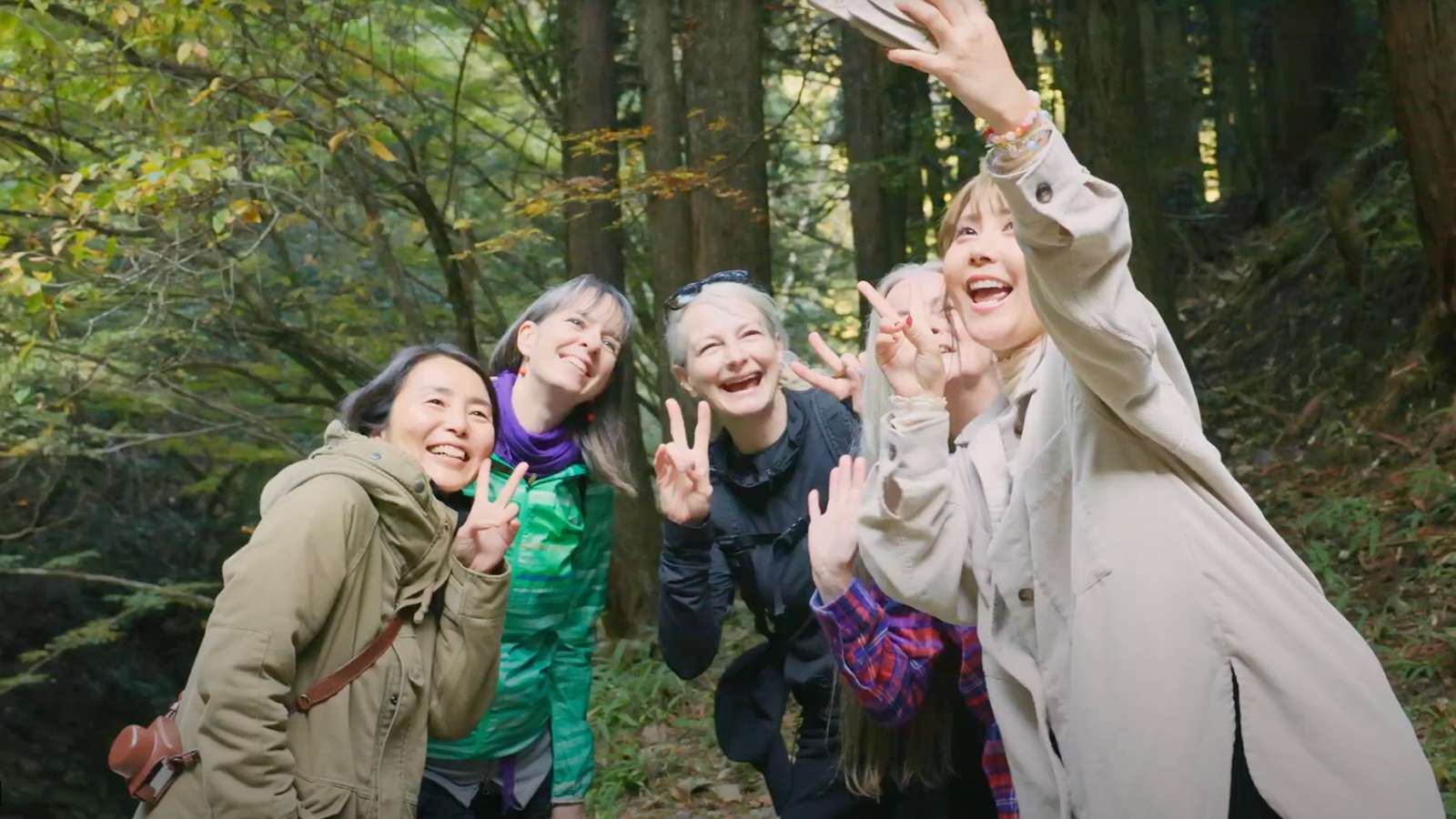

Three-day Retreat at a Hot Spring Inn
In addition to learning about giant salamanders, our three-day retreat at Taisenkaku includes meditation, yoga, hiking, ninja play, and being served Michelin-rated meals.
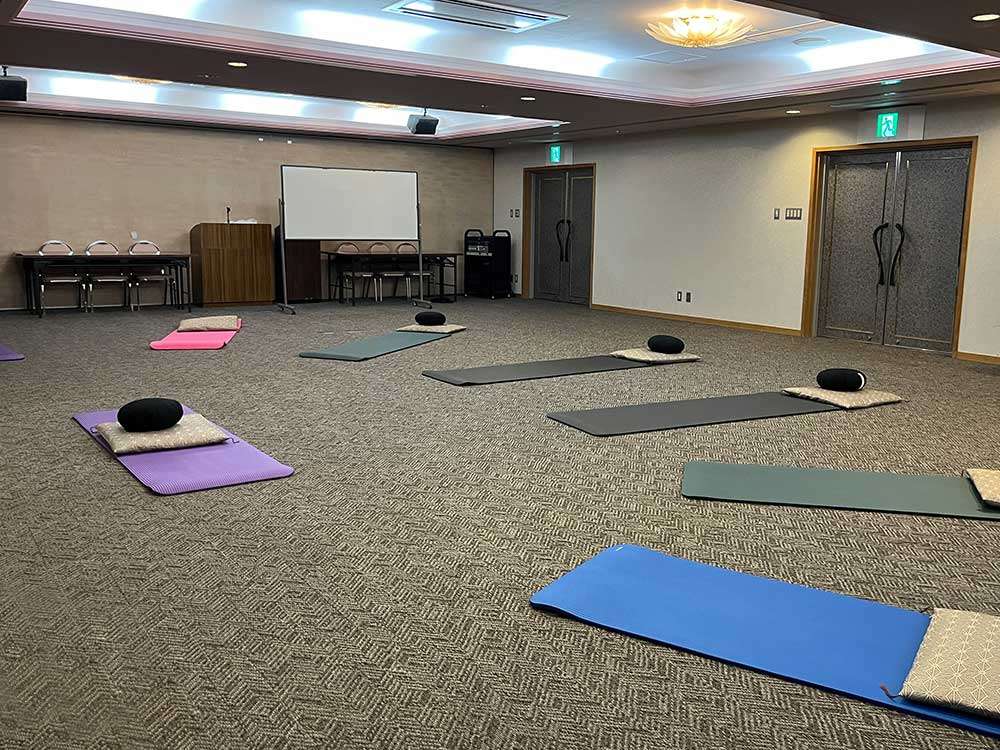
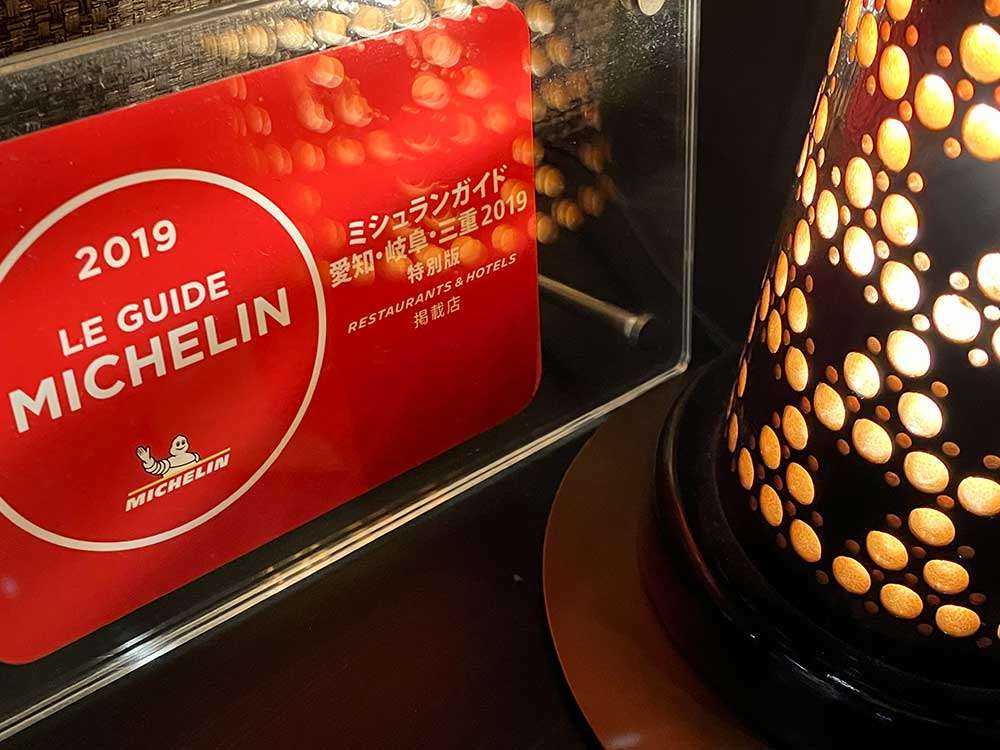
Taisenkaku is one of the few pioneer inns in Japan that has started offering gourmet vegan meals. Course after course comes to the table, each a show-stopper, artfully arranged on plates that showcase the food. Each dish offers subtle tastes and various mouth-feels. The bounty of the season and the location are honoured with locally grown organic vegetables. For dinner, we are served grilled king trumpet mushroom, leaf mustard with sesame sauce, zucchini, and eggplant miso gratin, matsutake mushroom tempura, chestnut rice, and perhaps most outstanding, an assortment of vegan sushi.
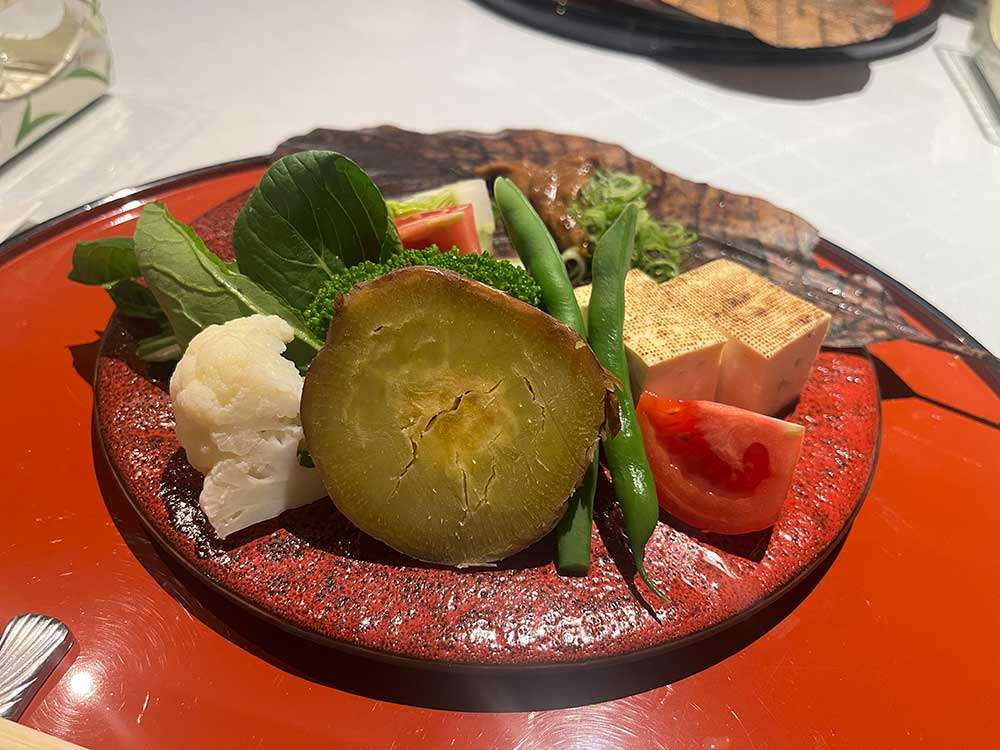
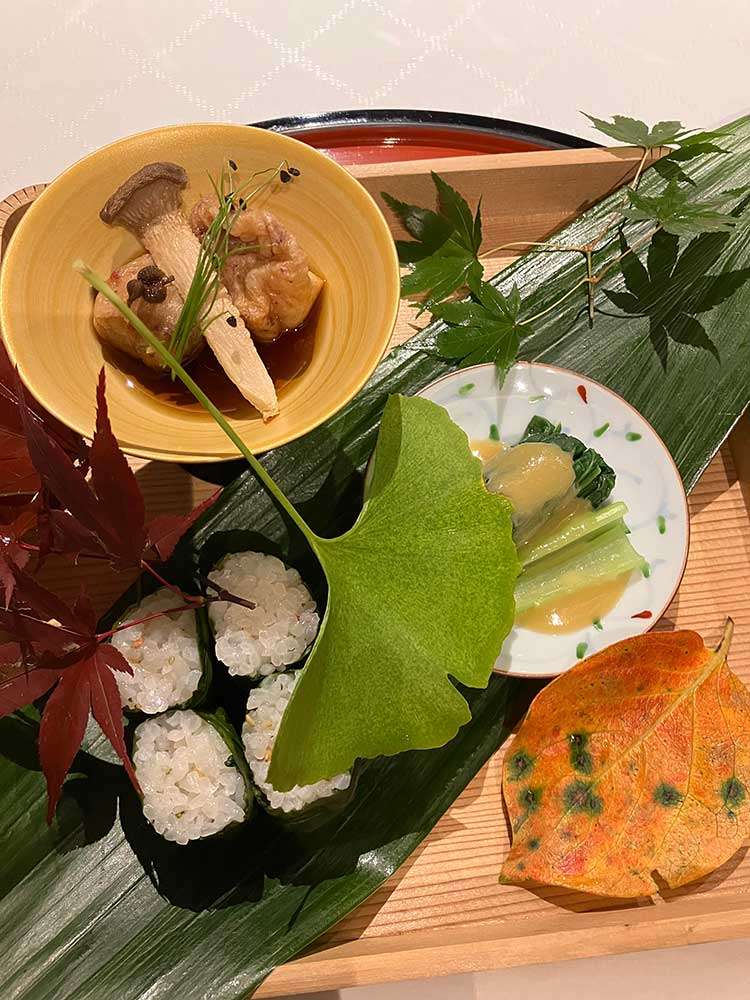
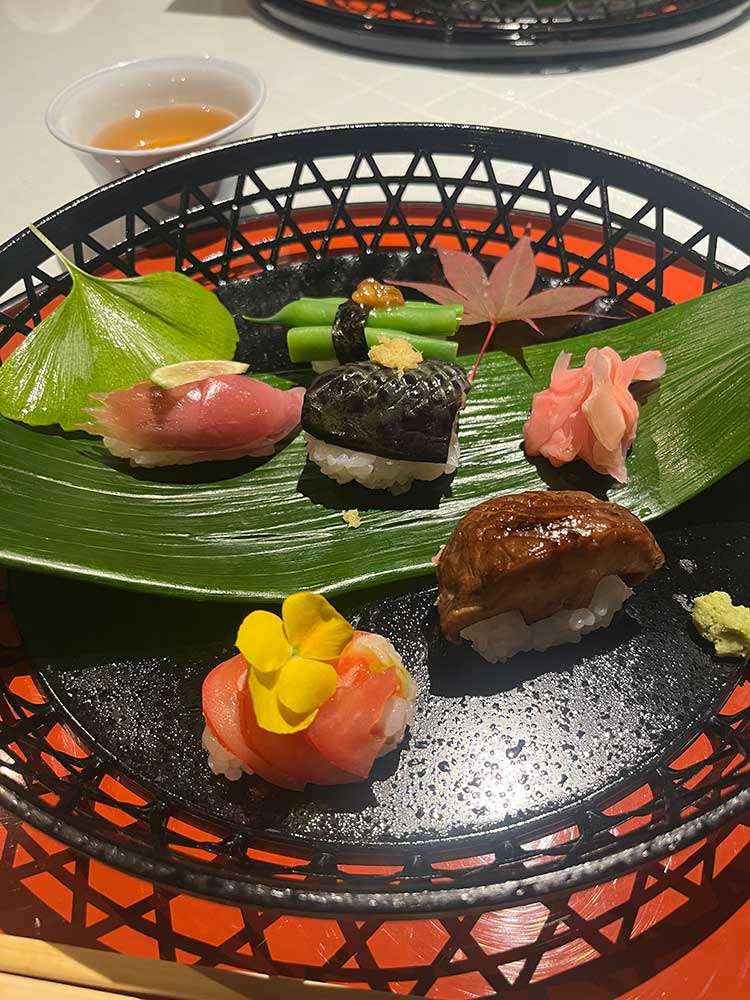
Taisenkaku is at Akeme 48 Falls (she-juu-hachi taki), a former Ninja training ground, in Nabari, Mie Prefecture. Akame translates as “red-eye” and “she-juu-hachi taki” translates as “48 waterfalls,” but in this case, 48 better translates simply as “many.”
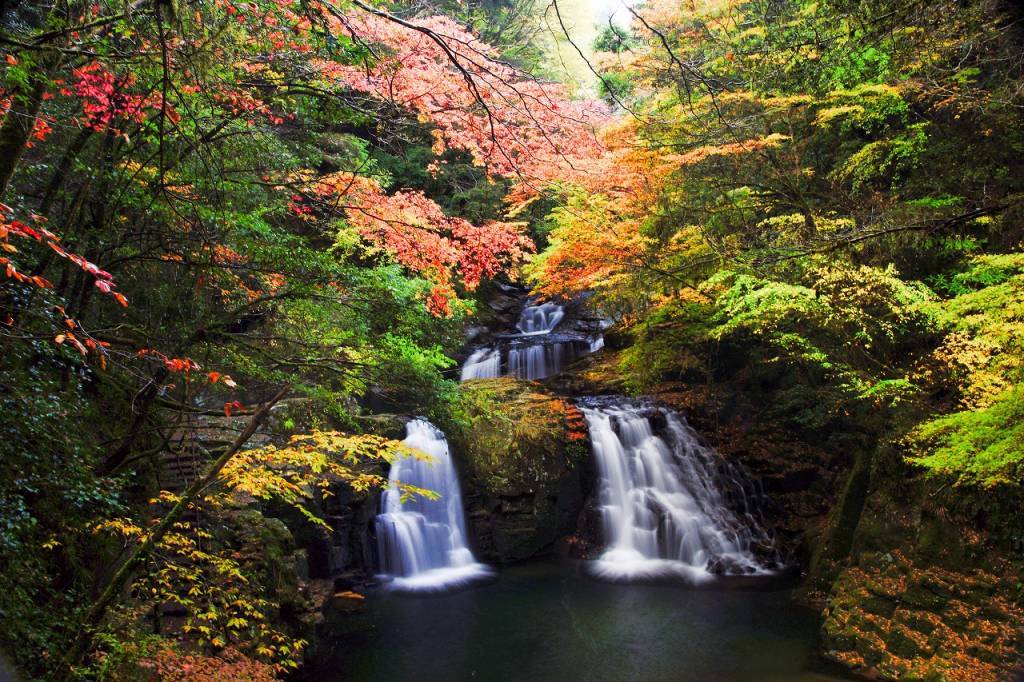
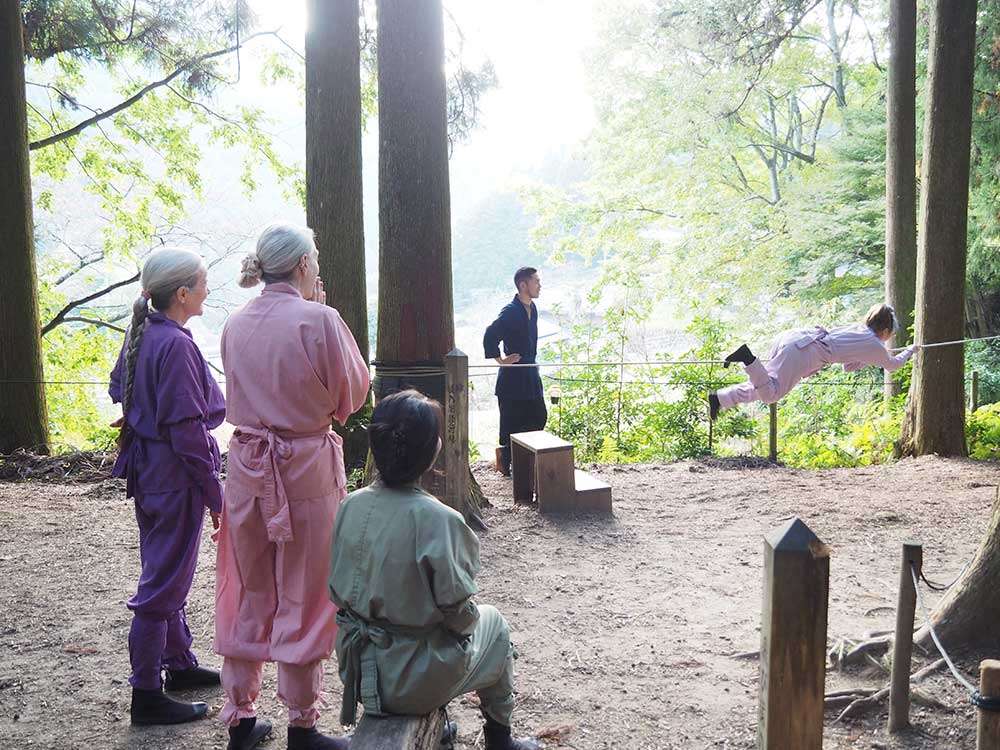
We’re going on a salamander hunt, we are going to catch a glimpse of one, we are not scared!
In the evening, we participated in a tour that allowed us to accompany an expert on a scientific survey of the giant salamanders. We are not modern-day ninja trainees, just inquisitive adventurers searching for a vulnerable, shy water carnivore that, on average, is a meter long. The perfectly camouflaged body of the giant salamander, or osanshouo, makes finding them challenging. Why search for them at night? Well, they are nocturnal so they may come out of their dens to feed, or they may not. We may find one or we may not. Searching for these mysterious creatures at night makes the experience more of an adventure.
First, we enter the Japan Salamander Center, where during the daytime, tickets are sold to hikers and where a number of salamanders live in clean, brightly lit, aerated tanks under informative signage in Japanese (I translated them with my smartphone). These creatures are nothing short of extraordinary, and to see one in its natural habitat is a rare privilege. Do you want to see one? Follow your curiosity!
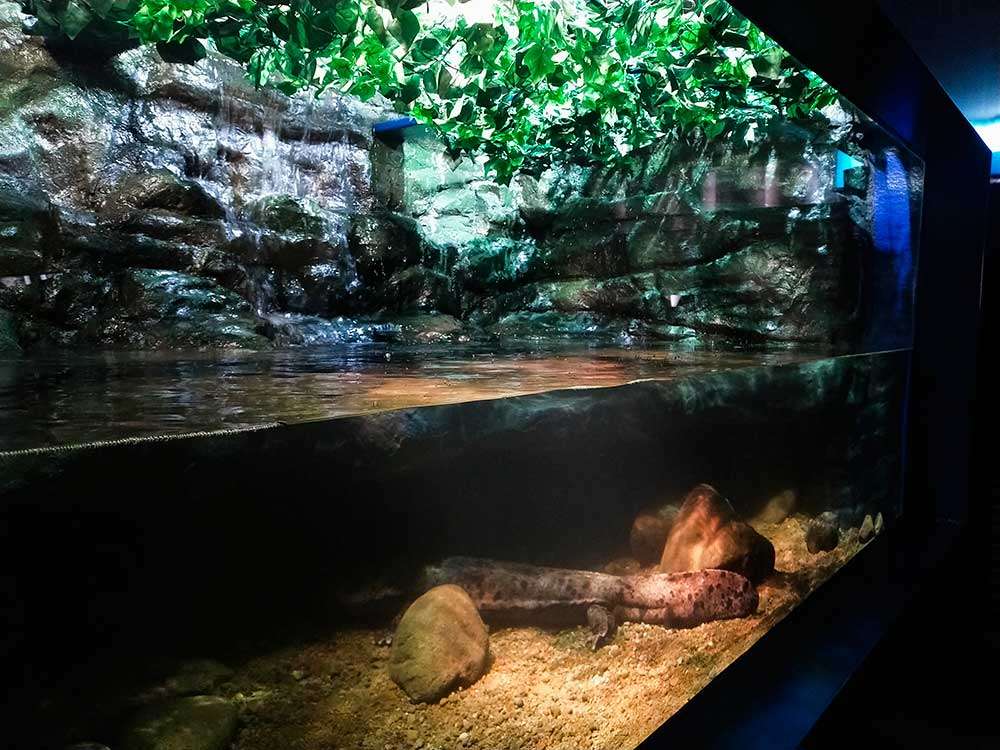
The hip waders come in various sizes to fit over bellies, feet, and thick clothes. Under my waders, I am comfortable in a sweater, down jacket, fleecy socks, and thick track pants. The waders are not the thick rubber type my father used to wear for fishing, but rather thin and flexible, so I had no problem scrambling over the uneven riverbed.
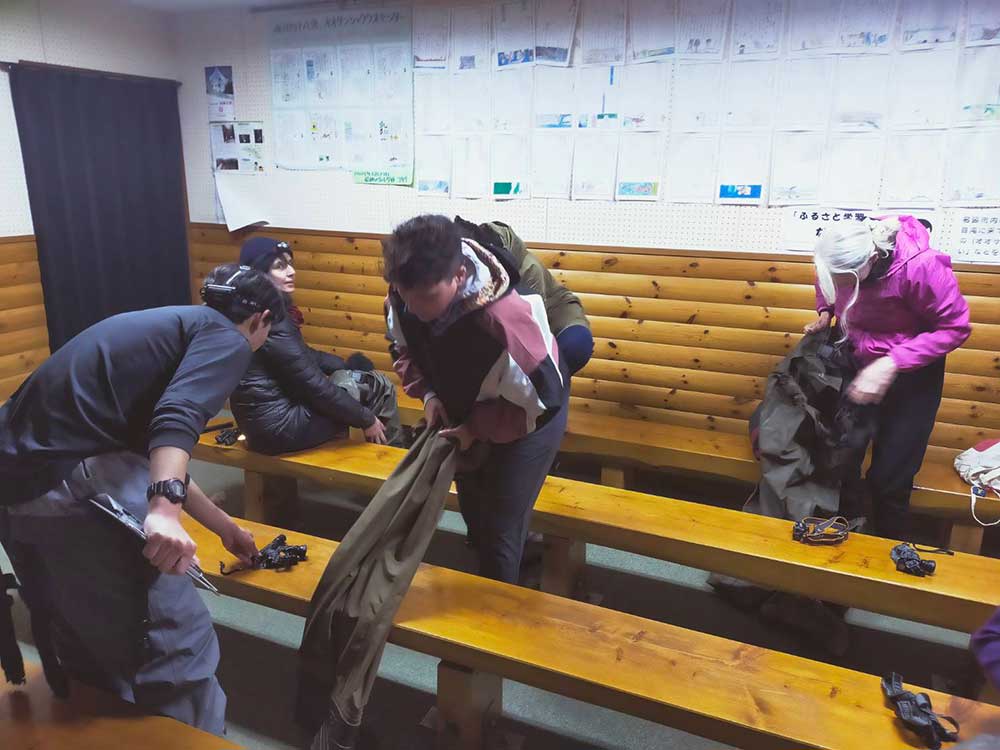
Our guide is a biologist/researcher. He joins us as we slip on hip waders and headlamps, then leads us down into the river. He suggests we look under big rocks. I find a stick that looks like a salamander’s tail. I feel like I am on an Easter egg hunt, but what if I step on one of these creatures? Could it put pinholes in my boot with its sharp teeth, or would my boot injure it? They are soft and slippery looking, so there’s a chance that if I stepped on one, it wouldn’t be good for either of us. My son has a stuffed toy osanshouo, which squeaks when you step on it, but actually, giant salamanders are silent.

The river is mostly knee-deep and, in places, quite fast-flowing. We slosh about, calling out to each other. About eight of us adventurers are joined by a videographer. I scramble to keep up with our guide as he moves farther upstream, ahead of everybody.
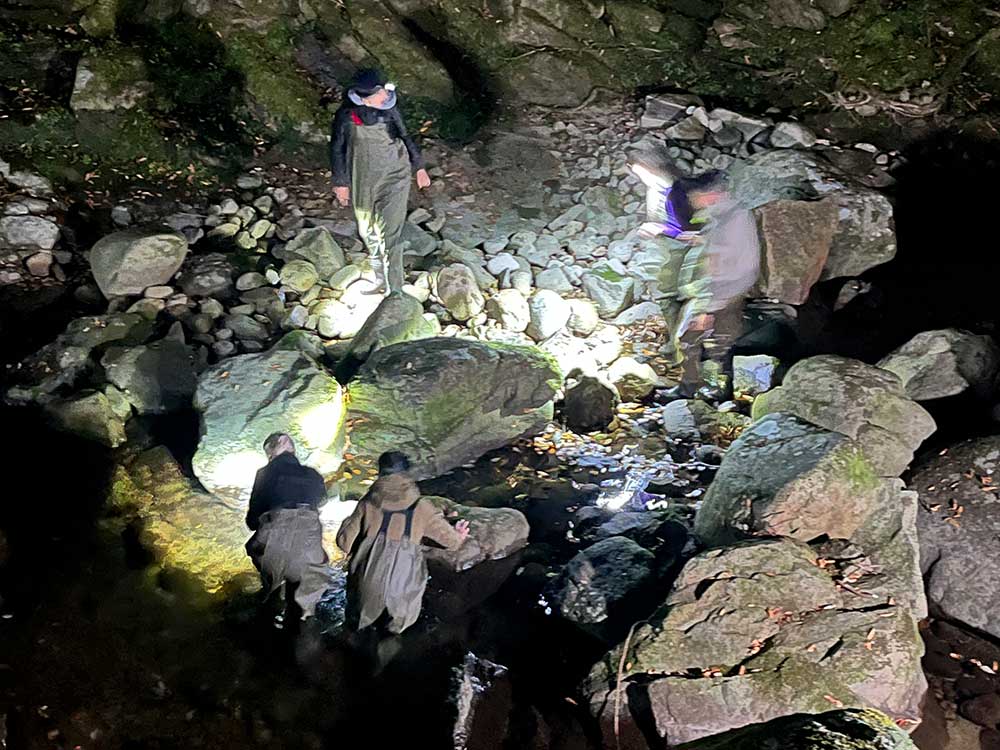
Then he calls out. He has found one! We are quickly gathered in a circle around it, our collective headlamp-power lighting up this big fellow. The biologist has already tagged it, knows it. It is illegal for us to touch it, but just seeing it there is awesome.

Japanese giant salamanders are protected, which means it is illegal to touch them; however, our guide has special permission and training to handle them. Later, at the Japan Salamander Center, he gently scoops up a salamander, which probably weighs the same as a newborn baby, and shows us that it is missing a toe and tells us it will grow back. The underside of this animal’s feet is pale and gummy. Our guide tips the big amphibian over a bit so we can see its belly. It is probably a male, but we are told that is only obvious during breeding season in September and October. This particular salamander has already been DNA tested to verify its ancestry as non-native. Japanese and Chinese salamanders cannot be distinguished without a DNA test.
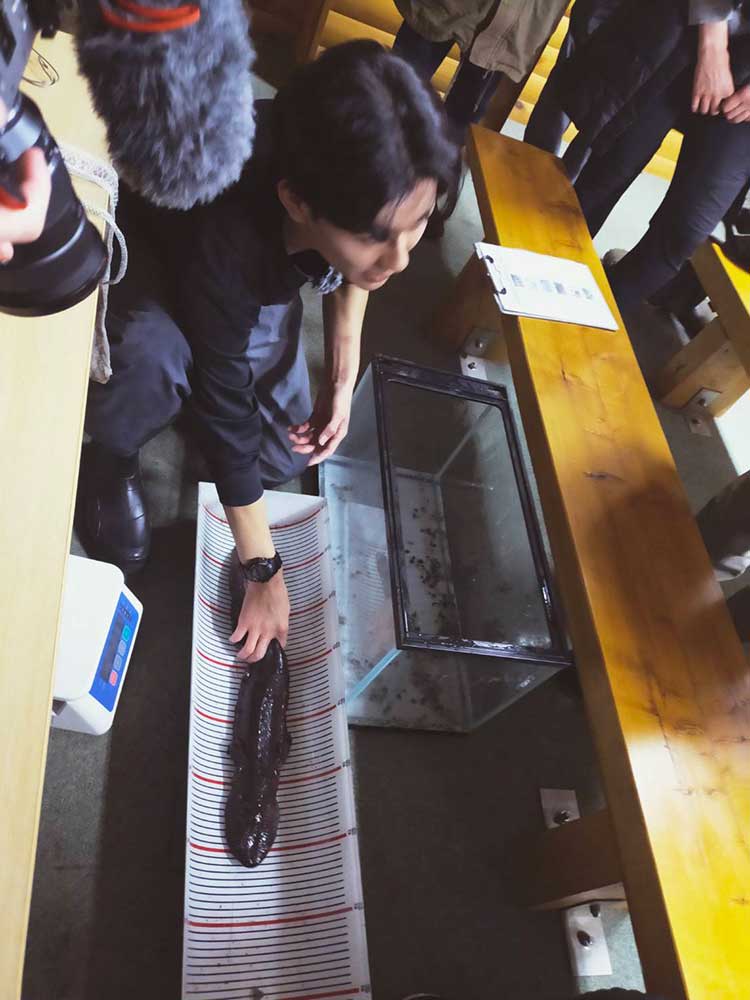
The foreign or crossbred giant salamanders are not protected by law. Thus, it is ok for tour participants to touch those ones. Would you? Handling causes giant salamanders to “sweat” a protective layer of slime. We lean in closely and sniff. This defensive slime is said to smell like its namesake, sansho, the green pepper leaf which decorates Japanese cuisine such as unagi (eel). The “o” simply means big. I tentatively touch the cool, slimy, bumpy back with my index finger. Although the slime is harmless to humans, I recommend you bring along wet wipes if you plan to touch one.
I am left feeling I want to know more. I want to know if the bright lights and our loud excited voices stress out this creature. Will sightseeing or viewing them in tanks be detrimental to their quality of life, or can they live their full lifespans, up to about 70 years, in captivity? As for the giant salamanders in the wild, have all their eggs of this season already hatched in the river? How did Chinese giant salamanders get to Japan, and why are they not treated with the same respect as Japanese giant salamanders? I think Chinese salamanders were brought over because the Japanese ones were becoming fewer. Perhaps people were eating them.
I am glad my dinner did not require killing or exploitation of any living creature 🙂
- Related links & information
-
- Retreat
The yoga and nature retreat and salamander searching are separate programs (salamander searching is currently not available). Yoga sessions may take place outdoors depending on the weather.
- Retreat
- Akame 48 Waterfalls
- Ninja training experience
- Akame 48 Waterfalls official website
- Taisenkaku official website
